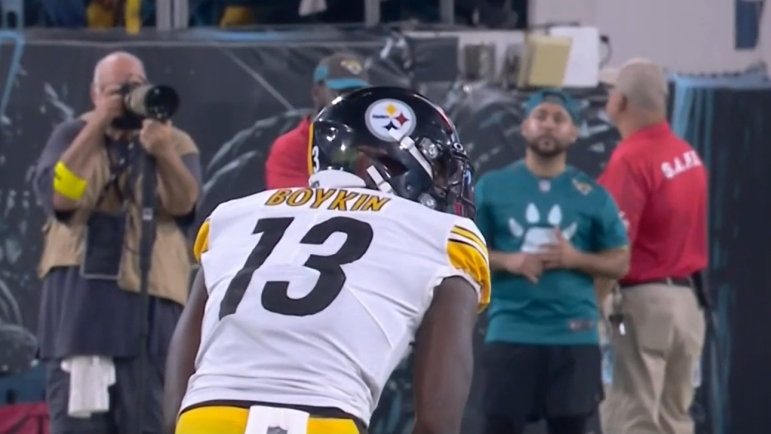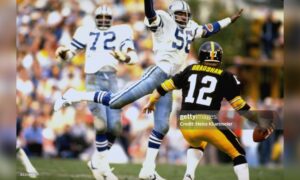Miles Boykin’s position is technically wide receiver. But in his first season with the Pittsburgh Steelers, that wasn’t his primary role. He served as an ace specialist, one of the NFL’s top gunners, and ended the year playing nearly 100 more snaps on special teams than he did offensively.
While he’s comfortable and dependable in that role, there was a time when Boykin was viewed as a dominant threat at wide receiver. He was a downfield playmaker at Notre Dame, averaging almost 15 yards per catch and eight touchdowns in his final year of college.
Initially, that carried over to the NFL. Drafted by the Baltimore Ravens, Boykin caught only 13 passes his rookie year but averaged more than 15 yards per grab and found the end zone three times. His sophomore season bettered his numbers, finishing with a 19/266/4 line. But in 2021, the Ravens eliminated his offensive role and he caught just one pass in eight games.
Pittsburgh claimed him off waivers and kept him in his special teams role. Interestingly, there was at least a thought of using him in the vertical pass game, his specialty, early in the year. On the Steelers’ sixth offensive play of the season, Mitch Trubisky fired deep down the left sideline to him. The pass fell incomplete but it was an early target. He’s top of the screen here.
For the rest of the season, Boykin saw only two more targets. He did see some time offensively but primarily was used in 13 personnel as the team’s big run blocking receiver. Only 25% of his offensive snaps were pass plays and aside from this Bengals’ clip, he wasn’t tried vertically again.
On paper, he has the tools to be an asset. Pittsburgh’s wide receiver room has depth but it doesn’t have many Z-type of wide receivers. There’s George Pickens, now a clear starter, but nothing else behind him. Diontae Johnson can win vertically but that’s not the bulk of his route tree while Allen Robinson isn’t the downfield dynamo he once was. Calvin Austin III obviously isn’t that guy, either while Hakeem Butler – if he makes the team – functions more in the slot than on the perimeter.
Perhaps that Bengals’ clip shows one of Boykin’s issues. While he has the height/weight/speed, his technique leaves a lot to be desired. Watch that play again and you’ll see Boykin’s issue. He looks back for the football and does it too early. It was one of the coaching points WRs Coach Frisman Jackson taught that we reviewed shortly after his hire.
“They want to look for the football as soon as they release off the line of scrimmage. We tell our guys that a go route is 40 to 44 yards downfield. I’m telling our guys to dig. I’m not looking back, I’m digging, I’m running for 20 to 22 yards.”
Then look back for the ball and “look to the sky” instead of looking back.”
To be clear, when Jackson says, “they want to look for the football as soon as they release…” he’s saying that as a negative. That’s instinctively what receivers want to do but the issue is it slows them down on their route. They’re not digging as hard as they should be. And as you’d expect, Boykin’s route is too slow and the ball gets overthrown by a step. If Boykin runs through and looks to the sky, he probably makes this play.
Barring injuries, and I mean multiple, it’s doubtful Boykin will see much of an increased offensive role. He’s the team’s new Darrius Heyward-Bey. A guy with size (Boykin moreso than DHB) and speed but a special teamer with a specialty and niche role offensively. For DHB, that was the occasional vertical shot and receiver run game while serving as a locker room leader and core special teamer. Boykin is in a relatively similar boat, though he’s a blocker in the run game instead of a carrier. But if Pickens gets hurt, the door opens up, and even still, Boykin could see a deep shot every now and then.








